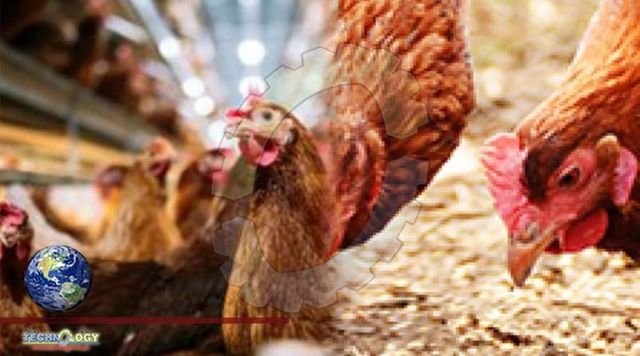A worker in Colorado helping to cull (depopulate) poultry that was presumed to have H5N1 bird flu has become the first person in America to test positive for avian influenza, according to a report from the Centers for Disease Control and Prevention (CDC) on Thursday.

The infected individual only experienced fatigue for a few days and has since recovered. The worker is being isolated and treated with influenza antiviral drug oseltamivir, which works by stopping the spread of the flu virus in the body.
The CDC stressed that the health risk to the public remains low. The federal health agency has tracked more than 2,500 people with exposures to H5N1 virus-infected birds and this is the only case in the United States that has been found to date.
Influenza among poultry and wild birds, however, has been spreading rapidly throughout the United States and around the globe. In January, the World Health Organization (WHO) reported that the United Kingdom had confirmed the only other known human case of this type of bird flu so far. China recorded its first human infection of another bird flu strain (H3N8) earlier in April. Reuters said the variant was found in a 4-year-old boy who had been in contact with chickens and crows raised at his home. He fell sick with fever and other symptoms.
The Center for Infectious Disease Research and Policy (CIDRAP) calls the U.S. outbreak — which has led to the loss of 35.5 million birds — the worst since 2015. The virus has infected commercial and backyard birds in 29 states and wild birds in 34 states.
In this week alone, the U.S. Department of Agriculture (USDA) was notified of new flu breakouts in six states. CIDRAP says infection recently struck a large farm housing 2.1 million poultry in Nebraska and at a commercial farm breeding 18,000 hens in Pennsylvania.
“The way to contain this flu is unfortunate,” said William Schaffner, MD, an infectious disease specialist and professor of preventive medicine and health policy at the Vanderbilt University School of Medicine in Nashville, Tennessee. “What you do is actually kill a lot of poultry in order to prevent areas from becoming hot spots for bird flu.”
Dr. Schaffner noted that these bird viruses, fortunately, do not seem to attach efficiently to the cells we have in our upper airways, noses, and throats. And since they do not spread readily from bird to human, the viruses do not easily transmit from person to person either. He added that consumers also need not worry about getting the illness from consuming or touching store-bought eggs and chicken.
Still, transmission is possible. CDC figures show that since 1997 more than 880 people worldwide have contracted HPAI and about half died from the disease. Symptoms can range from mild upper respiratory tract symptoms and lower respiratory tract disease to severe pneumonia with respiratory failure, encephalitis (inflammation of the brain), and multi-organ failure.
Most who have gotten avian flu live with or work among poultry. “Some people may have job-related or recreational exposures to birds that put them at higher risk of infection,” writes the CDC.
While not overly concerned about the human impact of this latest avian flu outbreak, public health officials are on the alert for mutations that could be more harmful to people. The 2009 H1N1 pandemic or swine flu outbreak originated in pigs, but scientists later found that the flu was a recombinant form of flu strains from birds and humans.
The different types of flu viruses mixed within pigs, swapping genes and giving rise to a variant that could infect human cells and reproduce.
“In this case, bird flu and human flu strains got together and exchanged genetic elements,” said Schaffner. “The pig acted as a kind of test tube and produced a new flu that could spread to humans. This happens rarely, but the world’s influenza laboratory communities are constantly on the alert for that possibility.”
As a general precaution, people are advised to avoid direct contact with wild birds and observe them only from a distance. Wild birds can be infected with bird flu viruses without appearing sick.
Authorities in several states, including the Illinois Department of Natural Resources, have issued warnings urging the public to halt the use of bird feeders and bird baths until the spread of avian influenza subsides.
Individuals should avoid poultry that appear ill or have die and avoid contact with surfaces that appear to be contaminated with feces from wild or domestic birds.
Because flu viruses are constantly changing, CDC says it will continue to monitor these viruses to look for genetic or epidemiologic changes suggesting that they might spread more easily to and between people.
Source: This news is originally published by everydayhealth
